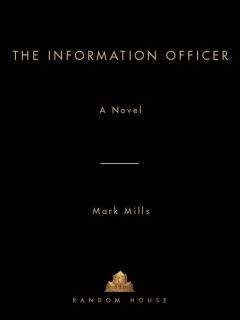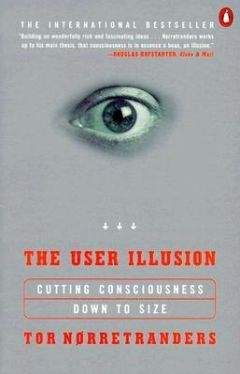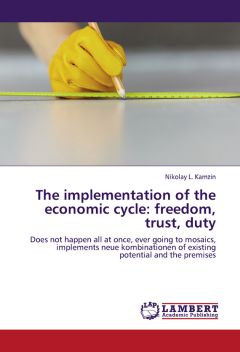Юрий Низовцев - Everything and nothingness
The active (consciousness) can't be as secondary in relation to lifeless objects, or to the things, which are not capable to be reproduced, to the things which are not have a genome as well as the reality can't be exclusive, sole – the reality for each living being is its own and this reality is "scooped" by consciousness of each living being by means of the sense organs, which it has, directly from boundless Uniform with the hidden help of the single consciousness, to correspond to each living being, species which there can be a set.
Nietzsche, apparently, has understood, more precisely, he intuitively has felt this difficult ratio of things and consciousness (sensations). He, in particular, disagreed that correspondence of language (the thinking tool) of external and internal reality is truth: "What such word? It is transmission by sounds of the first irritation. But to do the inference from irritation of nerves to the reason lying out of us there is already a result of false and inadmissible application of provision on the base. If only truth was a decisive condition in case of an origin of language, and collecting designations of subjects, people were satisfied only certainty, – then thus we could tell that: "the stone is solid" as though the word "solid" designates something absolute, but not our absolutely subjective sensation!" [2, p. 3].
As for Avenarius in his opposition to an objective truth (which is denied by him) of value of cognition by the principle of the smallest expenditure of forces: "If the basis of theoretical apperceptions … consists in principle of the smallest measure of forces, the influence of the latter should be affected in austerity execution of the process of apperception. It, undoubtedly, also is impacted that the amount of representations of apperceptions is brought to a minimum, necessary for apperceptions. At comparative-scientific consciousness the aspiration to be restricted in case of an apperception perhaps by smaller reproduction of representations is manifested in needs of unity and in the requirement avoiding all excessive" [3, §22], then this approach is connected to operation of the organism which is aimed to an economization of efforts, but it hasn't a direct bearing on dependence or independence from consciousness of things.
As we showed above, all things in a projection of Uniform are formed by single consciousness through a set of its own particles and in this regard depend on it, but also single consciousness depends on things, more precisely, – on the passive, inasmuch it forms not things, but their copies on the basis of Uniform – without Uniform single consciousness would have no "construction material".
Each individual consciousness also forms own direct surrounding, i.e. the surrounding, which falls within the scope of his sensations, but with the hidden help of single consciousness and certain change by it of the mechanism of perception of things by the living being so how the pause between impulses from sense organs to the processing centers of the living being in the form of packets of information in force of physiological features of each live organism – because of need of the refractive interval, or the interval recovering nerve fibers between impulses – drops out for consciousness: the human brain doesn't manage to fix it due to the short duration of each pause.
Therefore before each living being (consciousness) after processing of information packets by the appropriate centers arise moving objects and they, thanks to the inertial mechanism of perception of these objects, in particularly, by the person, when separate impulses merge into a continuous stream, are considered by him as the objective reality which is given to him in sensations although each copy is manifested originally as motionless.
Thus, reality as the "short-range layer", as if "shrouding" the person in the form of space, time and moving things, is "produced" by each individual consciousness through sensations of the person covertly from human consciousness, i.e. as if automatically thanks to unity of each individual consciousness and the cumulative (single) consciousness.
Otherwise, i.e. without time, space and moving things in so convenient and even a colourful type of the natural phenomena, any life, or events couldn't be for the person although a "primordial" holographic projection has absolutely other structure in which goes the process of high-frequency updating of copies of all objects of holography projection on the basis of Uniform with further formation, except measurement known to us, absolutely other measurements and patterns of beingness which are unavailable to the person from his three-dimensional measurement but at which also time, space and moving things are available inasmuch information process of formation of time by single consciousness through personal consciousnesses, more precisely, the living beings, means formation of space together with it with copies of things in it which for each individual consciousness in the carrier corresponding to him, acquire motion owing to dropping out in the human consciousness of a pause between positions of copying of things.
It is also necessary to mark that inasmuch copying of things in case of each updating of a holographic projection of Uniform is carried out sequentially based on what is available in a projection, but with high frequency in so far as the changes of copies of things in case of each impulse are insignificant and bound to previous forms in a holographic projection. As a result, in each individual consciousness (the living beings) high-frequency updating is reflected eventually not by the chaotic, but orderly processes of change and motion of beingness with compliance of the principle of causality.
The term "existence" together with the prefix "co" (co-existence) each person intuitively understands as events and if to think further, "event" is happening to someone and to something in some space and in some time, i.e. in routine (this we call beingness). But division of beingness on time, space and movement of things in it happens only in consciousness of the person, and we watch this partitioned beingness personally.
However we know nothing about something, being situated outside our sensations, i.e. what we feel. Therefore is reasonable to ask: is there anything outside of consciousness (sensations)? After all beingness is "enlivened" only by the presence of the live and the term "beingness" means the being of someone in something. Thus, meaning of beingness as receptacles of things, apparently, consists in "a service" of the live, which watches, acts, i.e. not necessarily of the person, but surely – consciousness which in the highest expression possesses not only ability to feel in own carrier, but – also ability to understand, and including itself.
If mentally to exclude consciousness, "having left" beingness as a repository of things alone in the residue, it becomes as a non-existence. What's the difference, there is something there or not? All the same anybody isn't present there. If, on the contrary, to exclude things, having left consciousness in loneliness, it at once loses life – there are no things, time, space, motion, – there are no and the existence as such, so as consciousness loses a support and at the same time – resistance of something, and without a thing it isn't present a subject neither for sensations, nor for speculations, nor for actions. In other words, beingness doesn't exist out of consciousness, and consciousness is incapable to exist without things, what means the indissolubility of beingness and consciousness in the basis, i.e. – their unity. Means, in the basis – out of time, or in infinity, they make organic whole, and they can be designated as Uniform. It is necessary only to learn a method of their "output" from eternal and infinite Uniform, i.e. to try to come nearer to the truth which is secret of Creation.
But it is already clear that consciousness in beingness, which is the derivative from projection of Uniform, is certain changes of the passive by consciousness; Uniform is steady, containing in itself everything, to which consciousness can address for maintenance of functioning of the projection; from this it follows that one is connected with another.
Heidegger tried to understand it in application to the person. He declared the following: "… Dasein itself has a "Being-in-space" of its own$ but this in turn is possible only on the basis of Being-in-the-world in general" [4, p. 82].
Heidegger could also represent that without motion, more precisely, in our interpretation – without the conversion of process of updating of copies of things in holographic projection in motion in human consciousness, – the world would remain hidden for the person: "If being-in-a world is a basic state of Dasein, and one which Dasein operates not only in general but pre-eminently in the mode of everydayness, then it must also be something which has always been experienced ontically. It would be unintelligible for Being-in-the-world to remain totally veiled from view especially since Dasein has at its disposal an understanding of its own Being, no matter how indefinitely this understanding may function. But no sooner was the “phenomenon of knowing the world” grasped than it got interpreted in a “superficial” formal manner. The evidence for this is the procedure (still customary today) of setting up knowing as a “relation between subject and Object” – a procedure in which there lurks as much “truth” as vacuity. But subject and Object do not coincide with Dasein in the world.” [4, p. 86-87].
Without the internal, i.e. without consciousness in the person, beingness for the person, as cognition, is absent – about this Heidegger also ponders: “If one reflects upon this relationship of Being, an entity called “Nature” is given proximally as that which becomes known. Knowing, as such, is not to be met in this entity. If knowing “is” at all, it belongs solely to those entities which know. But in those entities, human-Things knowing is not present-at-hand. In any case, it is not externally ascertainable as, let us say, bodily properties are. Now in as-much as knowing belongs to these entities and is not some external characteristic, it must be “inside”” [4, p. 87].
Any living being senses the world in own way, according to the sense organs which it possesses. This fact is realized by Heidegger and he raises a question about the possible subjectivity of the world: “Is “world” perhaps a characteristic of Dasein's Being? And in this case, does every Dasein “proximally” have its world? Does not “world” thus become something “subjective”. How, then, can there be a “common” world “in” which, nevertheless, we are? And if we raise the question of the “world”, what world do we have in view? Neither the common world nor the subjective world but the world-hood of the world as such. But what avenue do we meet this phenomenon?” [4, p. 92].
Without knowing about the true structure of Creation, about "mechanism" of its functioning, Heidegger can't answer the last question, apart statements about a polysemy of the world, its diversity that in itself is banality.
Knowledge of any subject can't be gained in full so as it is possible to go deep into it infinitely. So the truth for the person can have only essence character on the appropriate thresholds of knowing.
However truth depends, but not on the person, as such, truth depends by his consciousness, that not same, so as consciousness can exist and without human body, inasmuch consciousness too is the material formation receiving nevertheless the organs of senses into the person. Exactly single consciousness forms through the organs of senses of each person his "now", i.e. – all human world.
Therefore all representing (being) originally is for the person at all not accordance of knowledge of the reality, so as knowledge, as such, still isn't present, but it is compliance to sensations after their processing by consciousness with the advent of the spatial-temporal changing picture of life, or the current "now", formed by consciousness by means of sensations of the carrier of consciousness with direct support of single consciousness on the basis of the passive in irreversible sequence. This process is characteristic not only for the person, but also for any living being, and it occurs automatically, more precisely, outside the comprehension of this process by the person.
Only this process of formation of "now" of any living being can be considered by fundamental truth of existing for all living entities, more precisely, – its essence. But the person doesn't stop, unlike others living beings, on this "picture". He, as the being, which understands himself, with unmeasurable needs and the infinite, more precisely, intransient aspirations, wishes to learn the world and to improve the life, for what he willy-nilly should penetrate into essence of things, "extracting" from them at each level this or that truths, naturally, – the relative, or adequate only for this level. Passing different levels in cognition the being, understanding himself, broadens thereby own horizons, defines stability in things and in their order under different conditions and anyway changes the own life, and, so, changes the own consciousness.
Partially Husserl understood this, but he didn't find the best solution as soon as to ascribe full truth to the timeless: “Any truth is not a fact, i.e. aught as determinate into time. Truth, however, may have meaning that a thing exists, that there is available some state, some change occurs, etc., but truth itself is above any temporary, i.e. not meaningful to ascribe to it the temporary being, occurrence or destruction” [5, p. 55].
However the timeless is the infinite, eternal Uniform which contains everything potentially, but Uniform can manifested only in time, and not by itself. Therefore this consideration of Husserl characterizes him as the idealist believing in existence of the intelligible, the ideal, the incorporeal, but all it is possible to carry only to a non-existence or imaginations of religious consciousness.
Truth belongs to concepts by means of which human consciousness tries to estimate authenticity of the events in order to not to wallow in illusions, the false, different distortions of information that inevitably leads to the death. In fact, therefore the aspiration to truth, doing possible existence of human communities is characteristic for human consciousness. And all events can happen only in time, even, apparently, the mathematical outputs and proofs, distracted from beingness.
Truth – not a determinacy of beingness and not a condition of beingness as Husserl supposes shifting "center of gravity" on beingness. On the contrary, the beingness, surrounding us, or existing entities in general is defined by single consciousness, but " beingness" surrounding any individual consciousness, or its "now" is determined by individual consciousness by the steps of own development, each of which leads consciousness to comprehension of essences at this level of beingness; in other words, – leads consciousness to understanding by him of not many steady positions, regularities, connecting the being objects at that level, which consciousness reached – that means the comprehension by him of truths of this level of beingness.
Truth is equivalent of beingness to consciousness in experience, confirmed in every case by successes of consciousness in the use of beingness, exactly by this condition truth is determined and goes to the existence. Therefore truth corresponds to a level of development of consciousness and in this sense it is relative and truth can actually be equated to essence of a certain level and conditions of beingness in which it is comprehended.




